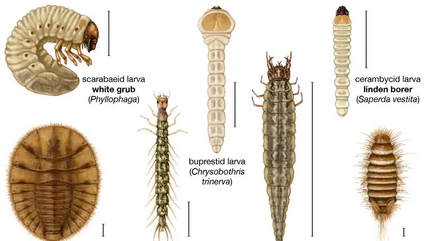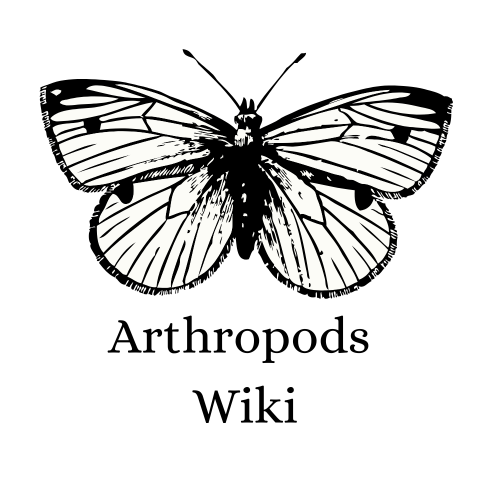
There are several types of coleopteran larvae. Carabid larvae have a tapering, flattened, smooth body, as do those of staphylinids (rove beetles) and silphids (carrion beetles); larvae of the Dytiscidae (diving beetles), although somewhat similar to those of carabids, have a lobed air float at the end. Larvae of click beetles (Elateridae) are cylindrical or flat and slender and have a hard surface. Some click beetle larvae, called wireworms, feed on newly planted seeds and roots of plant crops (e.g., maize, cotton, potatoes); others feed in deadwood or on wood-boring beetle larvae (Cerambycidae). Larvae of Buprestidae (metallic wood borers), which are soft-bodied and slender, bore under the bark of trees or burrow beneath the surface of leaves.
Morphology[]
Dermestid larvae, somewhat tapering and cylindrical, have whorls of short bristles and some longer ones and resemble hedgehogs or porcupines. Coccinellid larvae—flattened, broad in the middle, and tapering at the back—sometimes have a few low projections (tubercles) bearing short hairs and are often strikingly coloured with red or yellow and black. Larvae of the plant-feeding epilachnines often are yellow with black bristles. Scarabaeid larvae are soft-bodied, thick, strongly C-shaped, and somewhat flattened beneath and round above. Cetonine larvae, similar to those of geotrupids and lucanids, Passalid larvae, white and slender, are found with their parents. Chrysomelid larvae are short, are flattish or fat, and sometimes have lobes at the sides or appendages at the hind end. Cerambycid larvae are long and slender, with swellings at the sides of the segments. They are pale, almost hairless, and fairly soft; they have either minute legs or none at all; and the eyes are poorly developed. Weevil larvae, usually white and soft, are fatter in the abdominal region than at the head end. The head capsule may be hardened, be brown in colour, and have strong mandibles.
Defenses[]
Some beetles undergo hypermetamorphosis, in which they have different larval types in different instars (the stages between molts). The early larval stages usually are active, and the later stages are parasitic on other organisms. The active young larvae of most Meloidae (blister beetles), called triungulins, for example, hatch from eggs laid on flowers, become attached to bees visiting the flowers, and thus are carried to a bee nest, where they become parasitic on bee larvae.
